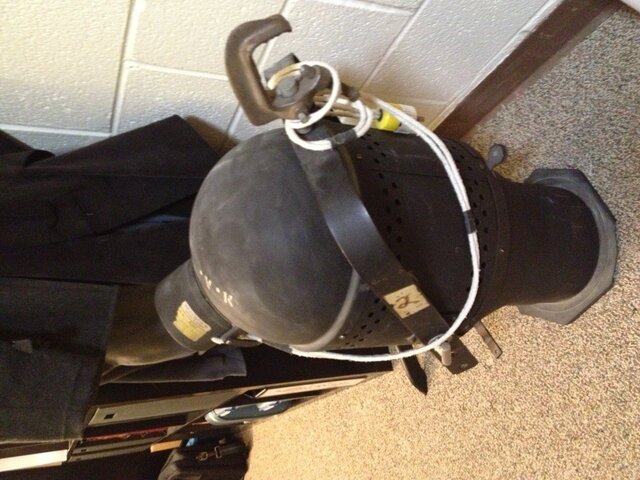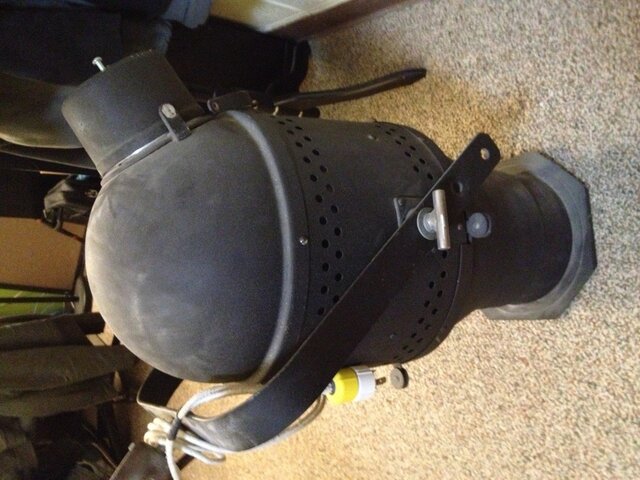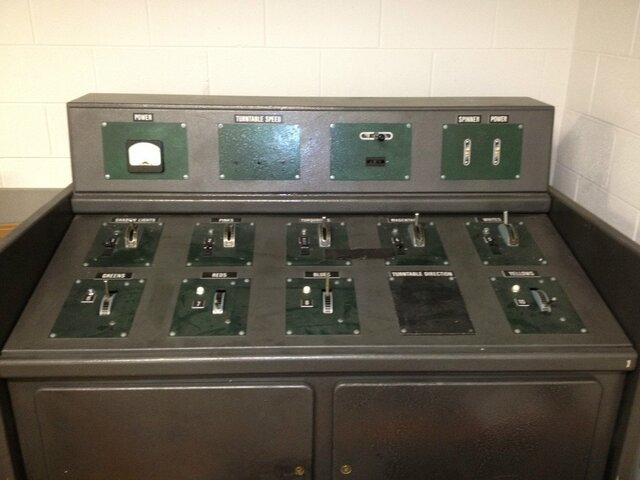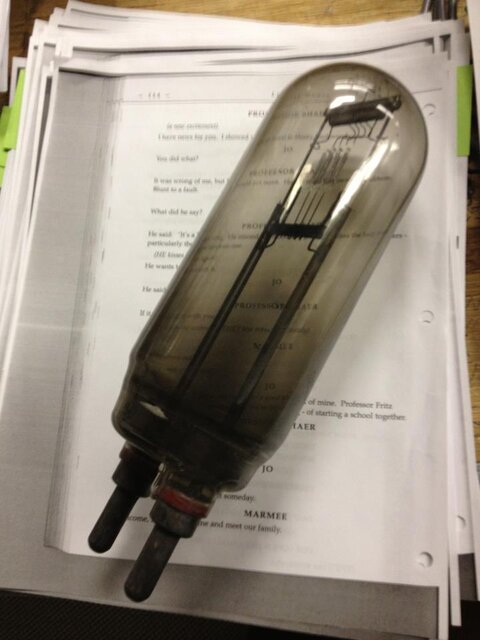Seems like a 8"
Leko from
Hub by way of stickers. Also more like a Kliegl #1368E
Leko but
Hub was buying old castings
etc. to other brands back than. Not 1950's as per a Kliegl, more like later 60's and the history of the place they are at would give a more reliable date than that. Given the stickers, I would assume accurate for brand and pre-like 1970 date (
Hub moved to Elmhurst in about 70') and unfortunately the Kliegl would be more valuable. There is a complete catalogue from
Hub on the Wikee from this website which should have this specific
fixture. Sorry, you are selling you do the
leg work in finding it and the part number and date.
Agreed with some of the above - cut the
asbestos at least to the
lamp cap, but not with the scrap metal persay or balk sales of them. Sorry, this is a museum piece only in very obsolete and them that would want it would want perhaps one or two of them only. I note on the photos that the
lamp cap yoke is broken to say the least in the one in the photos - not a resale photo to post on-line if trying to sell as with the
yoke knob I don't think origional.
Don’s Bulbs might rip you off a lot on lamp prices but give you some for any original lamps you have for them, otherwise a search into “antique
bulb collectors” might lead you to a forum with people that might buy the lamps for at least a decent price. That’s the lamps and you can sell fixtures without the lamp including E-Baying them. This granted
UPS/Postal Service/FedEx are not great in shipping old
filament lamps and you might end up with a broken
filament and no-sale in paying the shipping.
Overall worth of the fixtures - lamps or not and normally sold with
asbestos attached... obsolete and not as popular of a collector brand. Very few museums for
stage lighting and or people that collect them. I will also not be bidding on these lights given advice given and already own two Kliegl similar. Leaves out one of only a few bidders when my wife lets me buy stuff and I just bought a 1900-1910 box spot as per my budget anyway.
Brass tacks, overall wouldn’t take too much work to get them museum quality for what I see (like eight hours or work and parts.) Totally obsolete for
stage usage. Lenses on them might sell for a decent value - say start at $25.00 each if you with on-line help can determine their
focal length. Lenses are very expensive new and used ones are often just as good assuming anyone needing a 8"
lens. The
fixture itself probably for the same value one might start in listing price, but with a best offer option. Wiring and contacts will be toast at least for a lot of cleaning/surfacing work as with it’s shutters and I don’t believe it the correct
yoke knob. Yea, a lot of people list such things starting at $100.00 plus especially in thinking larger is more valuable but instead the reverse is the case often.
Was looking at a 3.1/2"
Leko from Times Square last night on E-Bay that was trashed with use and rust. Seller still thinking $60.00 after starting at $100.00, I’m thinking $10.00 in best offer. Your’s are at least in better condition, but no better really in a hard to sell type of thing. Sorry but not very popular lights to be selling.










